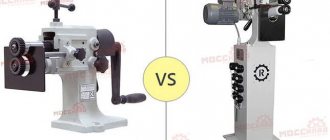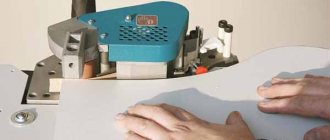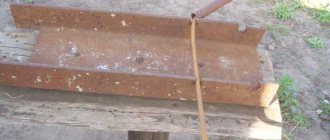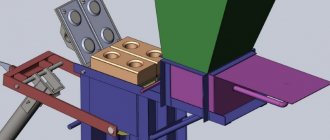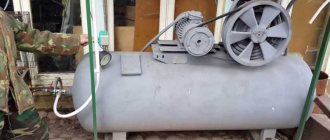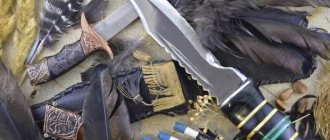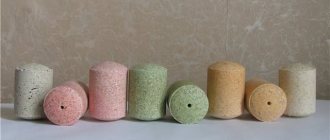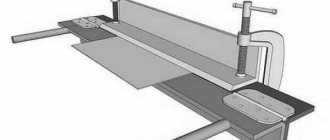The creasing machine is used in tin work for joining cylindrical parts, flanging edges and rolling ribs. This is a mandatory stage in the processing of sheet metal products, so the characteristics of crimping must be approached carefully. The executive tool of the zig machine is rolling rollers of various profiles. Each type of roller is designed to perform a specific job. In production, the machine works in conjunction with a folding bender, a guillotine, folding equipment and rollers.
How to choose a crimping machine to suit your needs and what parameters should you focus on?
1. Carefully study the technical characteristics of the machine. Consider your own needs. For example, is the machine designed for piece or mass production? After weighing all the arguments for and against, make your final decision.
2. Decide how much money you are willing to spend on purchasing the necessary equipment. For example, if the machine is needed to perform one-time operations, then you can take a manual seaming machine. To equip production, you should select a powerful industrial zig machine designed for high productivity.
Now we will take a closer look at how to choose a seaming machine. The most important criteria when choosing a crimping machine are the thickness of the metal being processed and the overhang of the rollers. Therefore, we will start choosing a machine with them.
This is interesting: Pipe bender for copper pipes: types, DIY production
Classification and design solutions of beading machines
Such equipment (often also called zigmachines) is distinguished by the following characteristics:
- By drive type. Zigmachines are available with electric drive and manual drive.
- According to the number of pairs of rollers for zigmachines – two (IV2714, IV2716) and four.
- According to the control method - with a pedal or using a push-button station.
- According to the power and thickness of the metal being processed. On manual machines (for example, on a manual beveling machine model Stalex RM08), it is impossible to crimp workpieces thicker than 1...1.2 mm, while on driven equipment processing of steel and greater thickness is carried out - up to 4 mm.
- By the presence or absence of a drive reversing unit on the crimping machine (in the first case, you can perform calibrating creasing of the relief, which is often required when processing products made from high-carbon steels). Such possibilities are specified in the passport.
The most popular models of electrically driven zigging machines are two-roller machines of the IVA 27_ _ series with horizontal spindles. Electromechanical beading machines are manufactured in accordance with the technical specifications TU 2-041-94, and include the following components:
- drive motor;
- two-stage rm type gearbox;
- support shaft;
- intermediate gear;
- a pneumatic cylinder (or hydraulic cylinder) that controls the movement of the upper working roller;
- lever drive of the pressure shaft;
- pairs of rollers;
- stop mechanism (for creasing piece workpieces);
- feed unit.
- control systems (pedal, button).
Zig machine design
An electromechanical piping machine works like this. When the engine is turned on, the torque is transmitted through a reduction gearbox and an intermediate gear to the lower support roller, onto which the workpiece, which has previously passed through the straightening unit, is fed until it stops. When the lever system with pneumatic clamping of the equipment is turned on, the latter is fed until it comes into contact with the surface of the workpiece, after which the stop is folded back and the motion sensor turns on the power supply of the strip into the adjusted gap. The relief corresponding to the profile of the tool is formed. If it is necessary to calibrate the resulting profile, the rotation of the engine is reversed, or re-beading is performed, slightly reducing the value of the working gap. To remove the finished product from the working space of the zig machine, it is enough to return the tool to its upper position by turning the cylinder into reverse.
The IV2716 creasing machine can operate as part of a profiling production line; it operates in automatic mode, and a tape or a long strip of metal is used as the initial workpiece.
To facilitate removal of the finished part, the machine is additionally equipped with either a roll winder or swinging reset levers, which are controlled by cams installed at the free end of the support shaft. Standard sizes of serial electric beading machines
| Model | Maximum thickness of processed metal, mm | Bed reach, mm | Maximum zigovka speed, m/s | Minimum quilling speed, m/s | Total drive power, kW | Additional features |
| IV 2714 | 2,5 | 400 | 0,283 | 0,045 | 4,35 | Roller conveyor, device for circular cutting |
| IV 2716 | 4,0 | 500 | 0,283 | 0,055 | 5,3 |
Purpose of creasing machines
manual seaming machine
The crimping machine is designed for joining metal parts with a thickness of 1/2 to 4 mm. At the first stage, the lock is rolled, after which the elements are connected to each other. Sometimes the castle needs to be additionally besieged manually.
The creasing machine is used for:
- production of cylindrical tin products: ventilation and water pipes, boxes, ebbs;
- thermal insulation of pipelines;
- processing of shells;
- roofing works.
Main types of operations: flanging, zig, corrugation.
The main advantage of crimping over welding is the absence of exposure to high temperatures on the metal, which causes internal stress and deformation. And also a more economical production method that does not require the purchase of consumables, the use of electricity or fuel.
Technical characteristics of zig machines
Sealing machines are characterized by the following main parameters.
| Characteristic | Meaning |
| Drive type | manual, electromechanical, hydraulic |
| Roller diameter | can be from 50 to mm |
| Roller overhang | up to 350 mm is an important indicator; when performing special work, the maximum reach of the shoulders is selected |
| Number of additional pairs of rollers | usually 4 to 6 pairs |
| Metal thickness | from 0.5 to 4 mm |
| Machine dimensions | even hydraulic zigovkas take up little space |
| Machine weight | from 17 to 300 kg |
Table 1. Some characteristics of crimping machines
Device classification
A large number of modern crimping machines can be divided into classes according to their most important indicators or design features. Most often, such machines are divided depending on the type of drive:
- Manual - the most common version of the zigovochny machine. All operating mechanisms of this machine are activated solely through the use of physical force of its operator. For example, in the upper part of the machine there is a special handle, with the help of which the rollers with working rollers are pressed. The rollers can be scrolled together with the part fixed between them. To use this type of machine efficiently, the operator requires certain skills, since several controls must be used simultaneously to process a part. The maximum thickness of the part that can be worked with on this machine is 15 mm.
- Hydraulic ones are the most powerful staking machines, but at the same time the most expensive. The technical characteristics of such machines allow you to work with metal workpieces of impressive thickness. Hydraulics provide high-quality pressure of the rollers to the workpiece and securely fix it. At the same time, the scrolling of the rollers and the movement of the workpiece being processed is carried out by means of an electrical type wire mechanism. In addition to the high price, these devices have another drawback - serious dimensions. That is why these devices are most often used in large industries.
- An electrically driven device is considered to be a medium-power version of a staking machine. Such a machine is more expensive than a manual one, but much cheaper than a hydraulic one. It is worth noting that, in addition to the electric drive, this machine also has a classic mechanical drive. It is with its help that I fix the workpiece between the rollers, which rotate thanks to the electric drive.
You can activate the operation of such a machine using a foot pedal. Thus, both hands of the person who works at this machine remain free, which greatly facilitates the process of processing workpieces. A characteristic feature of this type of machine is the possibility of its effective use both in home workshops and in serious enterprises.
How to operate a zig machine
Once the above device has been purchased or designed, you can begin metal processing. The machine is easy to use, but there are important nuances that are worth talking about additionally:
- The workpiece must be additionally secured using a special stop. The degree of fixation is adjusted using the appropriate screws.
- The leading edge of the workpiece should be inserted between the rollers of the machine.
- The second roller of the machine is controlled by a handle.
- The rollers are driven using a special handle (in manual machines).
Several cycles may be required to fully process a part. After the required result is achieved, the workpiece can be removed and the working units of the machine.
Areas of application for creasing equipment
Equipment designed to perform beading, even though the name of such a technological operation is familiar mainly to metalworking specialists, is actively used in various fields of activity. Sealing machines are practically indispensable for the manufacture of elements of roofing structures, in particular, for the formation of their edges.
Examples of drainage elements made on a crimping machine
It should be noted that in the construction industry, bending machines have found very wide application. Using such machines, in particular, the following elements of building structures and communication systems are made from sheet metal: parts of drainage and air duct systems, insulation for heating mains, etc. In the construction industry, manual staking equipment is predominantly used, since it is characterized by its small dimensions and insignificant weight, does not require an electrical supply for its operation and can be used almost anywhere.
The creasing machine can also be used to reliably connect cylindrical workpieces made of thin sheet metal together. Rollers for equipping a zig machine of this type, when a cylindrical workpiece passes through them, form locks on it, with the help of which the two parts are connected.
Rolling the lock on the air duct elbow
When making connections using locks, unlike welding, there is no thermal effect on the metal parts, which eliminates the possibility of their warping. In addition, such a machine, which you can also make yourself, does not require any additional consumables for its use.
To expand the functionality of a staking machine, including a manual one, it can be equipped with additional working parts. Machines equipped in this way can be used not only as creasing equipment, but also as bending and profiling equipment. Modern creasing machines for industrial use are often equipped with automated control systems, which increases their productivity and accuracy of technological operations performed with their help.
Special attachments allow you to make folds for connecting thin-walled pipes
Purpose and design of beading equipment
Before you begin to understand what a crimping machine is, you need to understand why creasing is performed. In the process of carrying out this technological operation, recesses of a semicircular profile are applied to the surface of the sheet metal workpiece. Such recesses, which are called ridges, act as stiffening ribs; their presence on the surface of a thin-walled metal product makes it much stronger. The size of the recesses, for the formation of which the zig machine is used, completely depends on the thickness of the metal used for the workpiece. To select this parameter, which is very important for such a technological operation, special lookup tables are used.
Many modern manufacturers produce crimping machines, the technical capabilities of which allow them to perform a whole range of technological operations. The operations to which sheet metal blanks are subjected during their circular processing include corrugating their surface, cutting and flanging. More powerful and productive, when compared with manual equipment, are electric crimping machines. Due to the presence of a powerful electric drive in their design, such machines make it possible to successfully process workpieces made of thicker sheet metal.
Main parts of the seaming machine
Regardless of whether the crimping machine is equipped with a manual or electric drive, the design and operating principle of such a machine remain virtually unchanged. The main design elements of such machines are two shafts, the axes of which can be located horizontally or at some angle. It is these shafts, rotating relative to each other in the opposite direction, that impart rotation to the working rollers fixed at their end part. The zig machine works, both manual and electric, according to the following scheme:
- the sheet metal blank is placed between two forming rollers of the equipment;
- the machine shafts are brought together, thereby ensuring clamping of the workpiece between the working rollers;
- using a manual or electric drive, the shafts are rotated;
- when the shafts and working rollers rotate, the part sandwiched between them also begins to move; When a workpiece is moved between working rollers with protrusions of the required size and shape, corresponding depressions are formed on the surface of the sheet metal under the influence of plastic deformation.
Design features of zig machines
One zigovochny device is structurally not too different from another. Their main elements - shafts - are located horizontally, vertically or at an angle. Forming rollers are mounted on the shafts, and the workpiece is secured between them. Due to the opposite movement of the main elements, uniform depressions appear on the metal. With their help, the necessary connection is made.
When choosing a crimping machine, you need to pay attention to the following technical characteristics:
- type of drive;
- diameter and overhang of rollers;
- the number of attached pairs of these parts;
- permissible metal thickness;
- machine size.
The smallest rollers are 50 mm in diameter, their number varies from four to six pairs.
An important indicator is roller overhang. It is better to purchase a machine with a maximum reach - up to 350 mm. This will expand the capabilities of sieving equipment.
The permissible thickness of the metal sheet is from 0.5 mm to 4 mm. The crimping machine will not take up much space (with the exception of CNC machines). Such a device can weigh from 17 to 300 kg.
Before starting work, the workpiece is fixed between the shafts and the handle is turned. On manual machines, due to their low power, it may be necessary to pass the workpiece through the rollers several times.
- https://met-all.org/oborudovanie/prochee/zigovochnaya-mashina-ruchnaya-zigovka-svoimi-rukami-chertezhi.html
- https://stankiexpert.ru/stanki/gibochnye-stanki/zig-mashina-svoimi-rukami.html
- https://metalloy.ru/stanki/zigovochnaya-mashina
- https://stanokgid.ru/metall/ruchnoj-zigovochnyj-stanok-svoimi-rukami.html
- https://prostruky.ru/instrumenty-i-oborudovanie/listogib-svoimi-rukami-instrukciya-i-chertezhi-dlya-samostoyatelnoj-sborki.html
- https://promzn.ru/stanki-i-oborudovanie/izgotovlenie-zigovochnogo-stanka.html
This is interesting: Pellet machine: types and features of machines for the production of pellets
Types of rollers for zig machines
rollers for zigging machine
Manufacturers can change the labeling of the rollers they produce; here are the most common names.
- V - for decorating the edges of insulating boxes and pipes, rolling wire using ZB ZA;
- S - for the production of stopper ridges and stiffeners;
- SK - for making ribs of rectangular section. Wide ribs are used to fix rubber seals in the manufacture of round-section ventilation ducts;
- E, EV - the edges of the pipes are corrugated, making the diameter smaller for socket connections. Used for the manufacture of ventilation and drainage pipes and chimneys. EV rollers perform both stop rib and corrugation;
- BC - bend the edges on flat-shaped parts for flanging elements of rectangular air ducts, used in the manufacture of round-shaped plugs;
- KA - the set includes four rollers (two pairs) for connecting round pipes with further spot welding. They make connections with an overlap of 8 to 12 mm, and are used in the manufacture of small series of air ducts and chimneys;
- BS, F - make a double fold of a vertical lock with a flanging height from 4 to 12 mm, it is selected taking into account the thickness of the material;
- BB - performing flanging of the edges of mortises of various shapes, including tees, as well as for bending the short fold of a vertical lock;
- KB - upsetting of a vertical lock. Lock folds are made on rollers BB, BS and F. They are used to connect branches and transitions of vertical folds, parts of weirs and air vents;
- BD - perform flanging of the edges of long round pipes;
- ZB, ZA - roll wire along the edge of the pipe. The edge is first bent on V rollers. This procedure is necessary to increase the rigidity of pipes made from thin sheets of metal; it is performed exclusively on zig machines;
- AV - coupling of inserts into ventilation blanks using a screw method, ensures tightness;
- DIN 71550 - makes semicircular ribs on pipe blanks of small diameters for attaching a flexible hose. The minimum diameter of the pipe is 1 cm, it works on any type of metal. This type of roller is not compatible with all types of equipment;
- M - cut pipe blanks across the diameter. Complete with a holder, it cuts out rings from sheets.
In order for a beading machine to perform quality cuts, it must be equipped with a parallel roller clamp. The semicircular stop is an addition to the BB rollers. It is used for external flanging in round cutouts of flat parts.
Types of sheet bending machines and features of their design
Before you start assembling a manual unit with your own hands, you should accurately determine the volume and list of work that the new device will perform in the future. Indeed, depending on the purpose of this unit, the design diagram of the device may also change.
Of all the solutions available today, the simplest sheet bending machine in terms of design is a product that bends sheet metal using a special traverse. Such a device is useful if you are working with material no more than half a meter , allowing you to bend the metal at an angle of 90 degrees without additional devices using only the strength of your own hands.
The material is fixed in a vice or clamps, where bending is carried out due to the high pressure from the traverse.
Sometimes, due to the high elasticity of the material, it is quite difficult to achieve an angle of exact 90 degrees. A special spacer (in the figure on the right), which looks like an ordinary strip of metal, helps to correct the situation
A press brake consisting of a punch and a die is much more difficult to manufacture. In this case, the sheet metal is placed directly on the die, where the desired profile is given to the workpiece thanks to a punch descending from above.
The press brake, unlike the machine, is not widely used due to its large mass and complex design. And working with it at home is not always safe!
Let's consider the option of assembling a sheet bending machine with your own hands, which will function in conjunction with a hydraulic press. If you already have a press at home, then adding a device for bending metal will not be difficult.
Practice shows that the sheet bending machine, the operation of which is carried out by 3 shafts, was and remains more advanced in operation. Such a unit is sometimes called a pass-through unit. Its main advantage is that the device makes it possible to produce metal blanks with different bending angles. The metal bending machine can be equipped with either an electric or manual drive, allowing craftsmen to implement a wide variety of designs.
- A broaching sheet bender can be additionally equipped with a traverse, a clamp and a support, allowing it to be used for manual bending of material. Machines of this kind are equipped with various shafts, which can always be purchased separately, making the device more versatile.
- Profiled rollers are used, as a rule, to give the desired angle to elements of roofing structures, be it flanges, ridges, gutters, valleys, etc.
- Rollers with a smooth working surface are used in most cases when it is necessary to carry out tin work, for example, to make sections of pipes of larger diameter or to bend workpieces.
Design Features
The classic design has the following features:
- The main structural element can be called a combination of two plates. Many manufacturers create these plates using the waterjet cutting method. The method under consideration has high accuracy.
- In the formed space between the two plates there are two shafts, which are the main elements in contact with the workpiece.
- Of the two installed shafts, the upper one is movable. Its movement occurs due to a special screw-type clamp. Note that a high-quality homemade zigging machine should have a uniform effect on the entire workpiece, since only in this case a high-quality zigging is obtained.
- The main parameter that can be set using the control unit, manual or automatic, is the zigging depth.
Zig machine design
The shape of the ridge can be different, depending on the type of installed rollers. Therefore, when creating a crimping machine with your own hands, you should provide for the possibility of replacing the rollers.
Rollers of creasing machines
Making at home
If you do not want to buy a factory-made crimping machine, you can make it yourself. This option is suitable for those who work with metal in home workshops and in limited quantities. For industrial enterprises, it is better not to use self-made equipment.
One of the advantages of a homemade machine is its simplicity and low cost of production. All the main parts can be easily found on your farm or purchased on the market. Of course, the number and nature of the parts depends on the type of device you are going to make. There are several options for producing a zig machine at home. We offer one of them.
To create the device you should prepare the following parts:
- Bracket.
- Working shafts (2 pieces).
- Cylinder shank.
- Device body.
- Protective cover.
- Device with a spring.
- Locking pin.
- Gear parts.
- Screw with folding handle.
- Rollers.
The device can be secured using a special screw, but this should be done in such a way that the shank of the mechanism fits into the bracket. The body of the device must be fixed in one position using a locking pin. Using the handle, you can regulate the movement of the apparatus shafts.
The rollers of a homemade zig machine are driven by another handle and by means of a toothed belt drive. When creating your own machine, be sure to ensure that the transmission elements are covered with a special casing.
Such a structural element will certainly make the operator’s work safer. For detailed information, watch the corresponding videos, of which there is no shortage on the Internet.
Video: Homemade manual ZIG machine.
Design features and purpose
The main function of the machine – beveling, which is the process of applying special recesses to a metal workpiece, the device can perform efficiently thanks to its special design. The presence of a groove on the surface of even very thin sheet metal can make it much stronger. The main thing in this case is to correctly select the parameters of the recess created by the device.
The operating principle of the crimping machine consists of the following key points:
- The operator places the workpiece between two rollers of the machine.
- The machine shafts fix the part.
- The shafts are then set in motion.
- During the rotation of these mechanisms, the fixed workpiece also begins to move. The working rollers have the necessary projections that deepen the metal workpiece to a given depth.
Listogib: is it difficult to do it yourself?
Most craftsmen claim that preparation and implementation generally takes less than a day, despite the fact that the materials need to be processed, because elements that are often rusty and not quite suitable for the parameters are taken. Next, we present the varieties depending on the ease of assembly.
Types for home use
- Rotary (clamping, with traverses) - quite simple, but take up significant space. They can be prepared from scrap materials. They are most effective when combined with cutting knives.
- Rotary (with rollers) - they are much more complicated, since the elements themselves require preliminary metal processing on turning equipment, and an electric drive is an additional complexity.
Bending machine drawing: introduction and improvement
From a design point of view, the manual sheet metal bending machine shown in the first drawing below can easily be improved. The diagram clearly shows that the metal bending device is assembled from the following components:
- Wooden pillow.
- Support beam made of 100-120 mm channel.
- Cheeks from 6-8 mm sheet.
- Bendable profile.
- A pressure beam made of 60-80 mm corners joined together by welding.
- Axles for turning the traverse (made from 10 mm metal rod).
- A traverse, the role of which is played by an 80-100 mm corner.
- The handle of the device is made of 10 mm rod.
(Drawing No. 1)
Initially, in the drawing, the traverse of the bending machine is made from a corner, but it is much better to make it from a channel . This solution will increase the endurance of the traverse many times over. Otherwise, at a certain point in time, the corner will certainly bend in the middle, which will noticeably reduce the quality of the bend in this place. At the same time, replacing it with a channel will make it possible to work longer on the machine without the need to replace components, providing more than 1300 bends instead of the usual 200, which is not much if you work actively!
The design of the presented sheet bending machine, made by hand at home, can be improved not only by changing the traverse, making the unit even more versatile and efficient.
The second drawing makes it possible to understand in more detail the design features of a homemade sheet bender:
- A clamp made of a screw with a collar and a heel, as well as a 40-60 mm angle.
- Cheek.
- A channel serving as a support beam.
- Do-it-yourself pressure beam bracket made from 110 mm angle iron.
- Pressing beam of the machine.
- Axis of rotation of the traverse.
- Directly, the traverse itself.
(Drawing No. 2)
We increase the reliability of machine mounts
A sheet bending machine, among other things, has another significant disadvantage, which is the layout of its placement on the working surface. The clamps themselves, namely they are designed as fasteners, are considered an unreliable fastening method. The situation is further aggravated by the fact that welds are characterized by rapid fatigue! Based on this, it makes sense to completely abandon the use of this fastening element, which will additionally eliminate cheeks and welded joints from the design of the device.
You can improve your sheet bending machine yourself in the following way:
- A support beam is made of such dimensions that in the future it can protrude beyond the boundaries of the working surface;
- U-shaped eyes are made at the ends of the support beam;
- The support beam is fixed to the working surface with shaped nuts with claws and bolts (M10).
But, if the new version of the sheet bending machine no longer has jaws, then how will the traverse be attached? This issue can be easily resolved this way: just use butterfly door hinges , which, as a rule, are used to secure heavy metal doors. The hinges themselves will provide the unit with greater accuracy, and fastening can be done using countersunk screws. In the second drawing this point is clearly demonstrated in the lower right corner.
Since butterfly door hinges are quite reliable, you can bend a lot of metal blanks on a homemade sheet bender with a traverse.
How to strengthen the pressure beam?
To extend the operational period of the clamping beam, making it comparable to the traverse, you need to supplement the corner with a metal base with dimensions of 80 by 16 millimeters. In this case, it is worth making a 2 mm chamfer on the working edge of the complementary element. At the same time, the front edge of the metal strip must be given a 45-degree angle to align it with the plane of the clamping angle.
In the second sectional drawing this element is shown at the top right. Thanks to this solution, the metal will begin to work in compression, and not bending as before, which was extremely undesirable, significantly increasing the operating time of the machine without breakdowns.
Another 60th corner should be welded to the back flange of the main clamping corner. This will keep the latter from bending upward. In the second drawing this moment is more clearly presented at the top left.
Don’t forget about the bottom of the pressure beam, namely the milling of this part, because it is what forms the bend of the metal profile. According to generally accepted rules, the unevenness of this plane should not be more than half the thickness of the future workpiece, otherwise it will not be possible to make an even bend with your own hands - swelling will definitely appear along the fold line!
It is important to note that the beam can be milled only after installing all welds , because their implementation often causes changes in the geometric characteristics of the structure.
DIY SIG machine
This SIG machine was developed by the author of the YouTube channel “Nikolai Chernak”. It is based on 2 shafts with a diameter of 35 mm. Installed in bearing housings. The lower shaft is stationary, the housings are tightly welded to the racks, and the upper shaft is movable - it rises up quite high. But you don’t need to lift it like that - it’s convenient until the engagement teeth come out.
When planning, it was taken into account that the axis of rotation is closer to the teeth - but not too much. Because if you place it closer, the body gets stuck. Therefore, it is designed like this: closer to the teeth, at the same time on the edge of the body, so when opening, nothing interferes with anyone.
A gear wheel is used at the rear - a gear pair - it was taken ready-made from the wheel beading mechanism. Previously, during the Soviet Union, kits for passenger cars were sold - trimming, disassembling wheels. I took a gear from it. The gear ratio turned out to be good - easy to rotate.
The steering rod of the car is used in the mechanism for opening the impellers. Convenient – ready-made hinge, just welded, that’s it. Let's weld the screw on the hinge to avoid a break here. The handle is also made by hand from old car parts; at the end there are balls from steering tips. There is a part feed limiter, i.e. letting the lambs in, you can use it. Parts from shock absorbers were used. Hub of a Minsk motorcycle. To avoid sharpening, motorcycle parts are often used.
The working rollers are made to be removed separately from the hubs. If you unscrew the three screws, the upper part of the impeller is removed. And the hub always remains screwed on. But it has movement along the key. There is a corkscrew. As a result, there is no need for very thick blanks during the production of new rollers. Having narrow workpieces on this ZIG machine, you can grind rollers of different configurations.
Where does the assembly begin?
To assemble a sheet metal bending machine, you will need drawings, photos, and videos demonstrating the assembly sequence with your own hands. In addition, before work, it is important to think through some points, namely the availability of components, the effort that will need to be applied for work, the cost of the device, weight and dimensions, which, in turn, will affect mobility. As a result, we obtain approximately the following set of initial data:
- The number of working cycles within which the sheet bending machine will operate without repairs and readjustments is 1200;
- The maximum permissible width of a metal profile is 1 meter;
- The maximum bending angle of sheet steel without manual finishing is 120 degrees;
- The design of the machine should not include welded joints that poorly tolerate alternating loads;
- Profile thickness no more than 1 mm for copper, 0.7 mm for aluminum and 0.6 mm for galvanized;
- It is worth minimizing the number of components that will need to be ordered externally, focusing more on the help of milling machines and turners;
- It is not recommended to use parts made of special steels (stainless steel) for assembly.
It is extremely difficult to find a drawing of a sheet bending machine that would fully meet the listed requirements, but this does not prevent you from using the closest solution, modifying it to suit yourself.
How to make a homemade sheet metal bending machine
Let's watch the video instructions:
Isn't it easier to buy
The disadvantages of purchased equipment include:
- high cost;
- standard functions and sizes - you cannot improve the model and customize it for yourself;
- large dimensions.
The simplest way
Even if you don’t have time to do this installation, but you urgently need to bend the edge (end, thin layer), you can attach the workpiece to a hard corner and beat off the ends with a mallet. It's simple, but there are disadvantages:
- the bend is uneven;
- you need to apply a lot of physical strength.
Sheet bending machine for thick sheets
The best option is an electrically driven roller machine or a hydraulic press, since it is difficult to bend significant volumes manually and the impact must be quick and massive.
What is the device
This is stationary equipment with the following features:
- made of metal or hard wood;
- dimensions exceed the workpiece;
- there are moving and fixed parts (shafts, dies, punch and matrix).
The rest of the appearance depends on the specific model.
Application area
The devices are used in factories, auto repair shops, and also in households. Installed outdoors and indoors.
Selection principles
When purchasing a crimping machine you need to consider:
- dimensions of equipment, premises;
- type of drive;
- roller material;
- control system;
- number of rollers;
- thickness of metal for the manufacture of housings and moving elements.
We must not forget that there are different types of videos. They vary in shape. You need to think in advance about the purpose of using the installation and purchase a set of consumables.
Compact machine (Photo: Instagram / metalmaster_stanki)
Advantages and disadvantages
Advantages:
- mobility of hand models;
- ability to work with parts of different thicknesses;
- Ease of Management;
- low price;
- long service life;
- the ability to join metals that cannot be processed by welding.
To work with parts of large thickness, an electric or manual drive is not enough. You need to buy expensive hydraulic equipment, which takes up more space.
Manufacturers and price
There are various brands of manual, electric, and hydraulic crimping machines sold in the market. The cost depends on brand awareness, drive type, power, and performance. Manufacturers:
- JET;
- MetalMaster;
- Isitan;
- Stalex;
- Proma;
- Schulze;
- IKMN;
- STS.
The average cost of manual installations is 15,000 rubles.
